Content
- What are triglycerides and their functions in the body
- Norms of triglyceride levels in women by age, pregnancy, hepatitis B, menopause
- What analysis is performed to determine the level of triglycerides
- Indications for research
- Training
- Research progress, waiting times for results
- Measurement units, analysis reference values, interpretation
- What affects the reliability of the study
- Reasons for an increase in blood triglyceride levels, what to do
- Eating disorders
- Cardiovascular pathology
- Pathology of the hepatobiliary tract
- Bowel pathology
- Inflammation of the pancreas
- Reasons for lowered rates
- Triglyceride Videos
Triglycerides (TG) are a type of fat, which are the main source of energy for the body. The rate of their content in the blood depends on age and gender. Women have slightly lower levels of substances than men.
What are triglycerides and their functions in the body
Triglycerides belong to a group of lipids (fats) that are directly involved in metabolic processes in the body and provide it with a sufficient amount of energy.
The compounds come mainly with food and are absorbed from the intestine with the help of bile acids. Substances are formed in the liver from dietary fats and carbohydrates (in small quantities).
The functions of lipid fats can be roughly classified into 2 large groups:
- Energy. In the process of converting 1 g of compounds, 38.9 kJ are formed.
- Structural. Most of the substances are involved in the formation of cell membranes.
The role of TG in the body:
- the construction of cell membranes, since substances are their main building material;
- the formation of energy reserves (body fat);
- transportation of cholesterol.
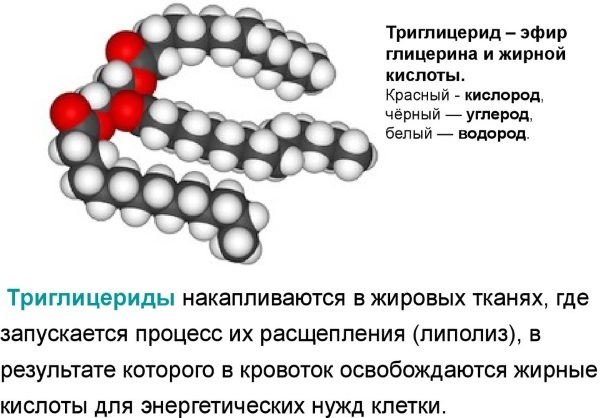
The very process of transformation (breakdown) of lipids occurs in adipose tissues and is called lipolysis.
Norms of triglyceride levels in women by age, pregnancy, hepatitis B, menopause
The rate of fat in a woman's body depends on age and other physiological conditions (pregnancy, menopause, lactation).

| Age | Rate (mmol / l) |
| 15-20 years old | 0,44-1,67 |
| 21 to 25 years old | 0,41-1,48 |
| 26-30 years old | 0,42-1,63 |
| 31-35 years old | 0.44 to 1.70 |
| 36 to 40 years old | 0.45 to 1.99 |
| 41-45 years old | 0,51-2,16 |
| 46 to 50 years old | 0,52-2,42 |
| 51-55 years old | 0.59 to 2.73 |
| 56-60 years old | 0,62-2,86 |
| 61 to 65 years old | 0.63 to 2.70 |
| 66-70 years old | 0,63-2,72 |
| Over 71 | 0,68-2,64 |
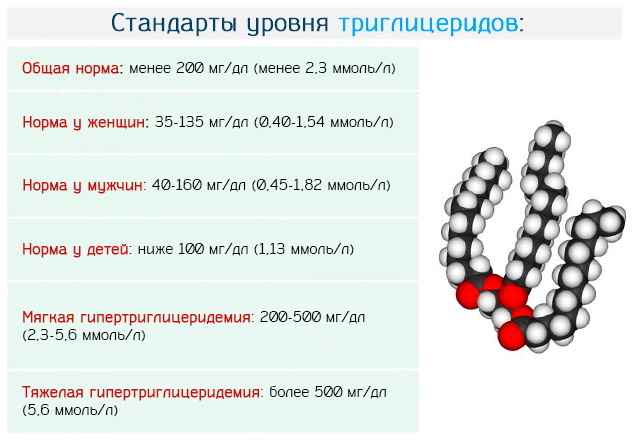
During pregnancy, the level of substance content can increase by 1.5-2 times. The condition stabilizes only after childbirth in 1-1.5 months. This feature is also typical for breastfeeding. At the same time, the TG level also increases and can fluctuate.
The maximum triglyceride level during menopause should not be more than 2.63 mmol / l.
What analysis is performed to determine the level of triglycerides
To determine the level of lipid fats, a blood test is prescribed. The analysis (lipidogram) allows you to determine the exact level of low density lipoprotein (LDL) and the amount of high density lipoprotein (HDL).
Cholesterol is additionally determined, since the substances are interconnected.
Indications for research
Triglycerides in the blood (the norm in women by age is determined according to the normal state of the body) can increase against the background of various reasons, with the development of which you should consult a doctor.
The procedure is carried out according to the recommendations of a specialist and only in the presence of certain indications - symptoms by which one can suspect the presence of a violation.
Recommendations for the purpose of the study:
- preventive examination (including pregnancy);
- the presence of cardiovascular disorders (especially if atherosclerosis is suspected);
- ischemic heart disease (CHD);
- control over the effectiveness of the prescribed dietary food with the combined use of drugs that reduce TG;
- diabetes;
- stroke;
- age over 55 (menopause);
- inflammation of the pancreas (pancreatitis);
- myocardial infarction;
- gout;
- obesity (sedentary lifestyle);
- congenital diseases that disrupt lipid metabolism.
Also, the analysis is necessary for patients who abuse fatty foods and alcohol. Diagnostics is also carried out for those who have relatives in the family or family with diseases that disrupt lipid metabolism.
Training
Before taking the analysis, you need to prepare. The day before it, you should refrain from physical exertion and avoid stressful situations.
Within 2 days before the examination, it is necessary to exclude fatty, spicy and fried foods from the diet. It is also necessary to completely exclude alcohol intake.
For 12 hours before the study, you should refrain from eating any food. The analysis is given on an empty stomach in the morning.
A few hours before the procedure, you must stop drinking fluids. It is allowed to drink only non-carbonated water.
It is not recommended to undergo the study immediately after other instrumental diagnostics or physiotherapy procedures.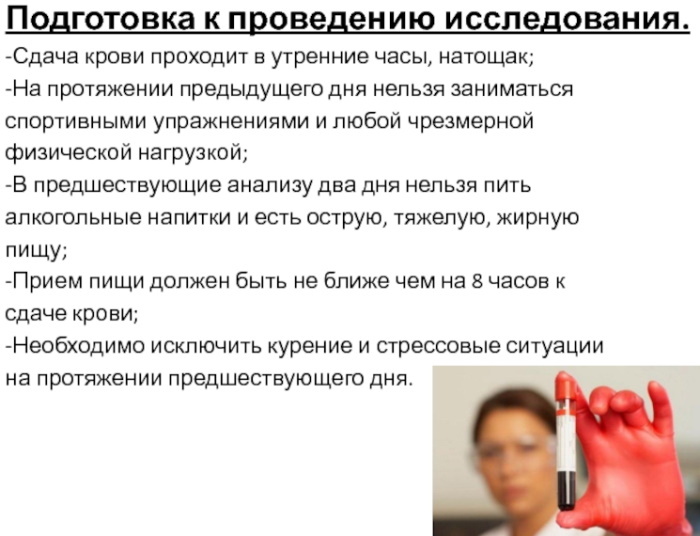
When taking medications, you should consult your doctor. You may have to stop taking them a few days before the test. In this case, it is imperative to abandon drugs that have a direct effect on the concentration of triglycerides, glucose and digestive enzymes.
Research progress, waiting times for results
The procedure is a collection of venous blood with its subsequent study in the laboratory. The analysis is taken using a medical syringe in a hospital (doctor's office). The resulting sample is placed in a special flask and sent to the laboratory in a container.
As a rule, in regional polyclinics, the results and interpretation of the analysis can be obtained within 3 days. In private clinics, you can get results the next day.
In the event of an emergency analysis, the results can be ready within 1-3 hours.
Measurement units, analysis reference values, interpretation
Triglycerides in the blood (the norm in women by age should vary from 0.44 to 2.70) are indicated in mmol / l. At the same time, there is also a separate column in the decoding with cholesterol indicators, which are also noted in mmol / l.
Reference values (decoding):
- Up to 1.7 mmol / L - normal level, no pathology.
- From 1.7 to 2.25 mmol / L - moderately high lipid content (additional diagnostics required).
- 2.26-5.64 mmol / l - high concentration. More research is needed to determine the cause of the disorder.
- More than 5.65 mmol / L is a very high level. The condition is critical, hospitalization is possible.
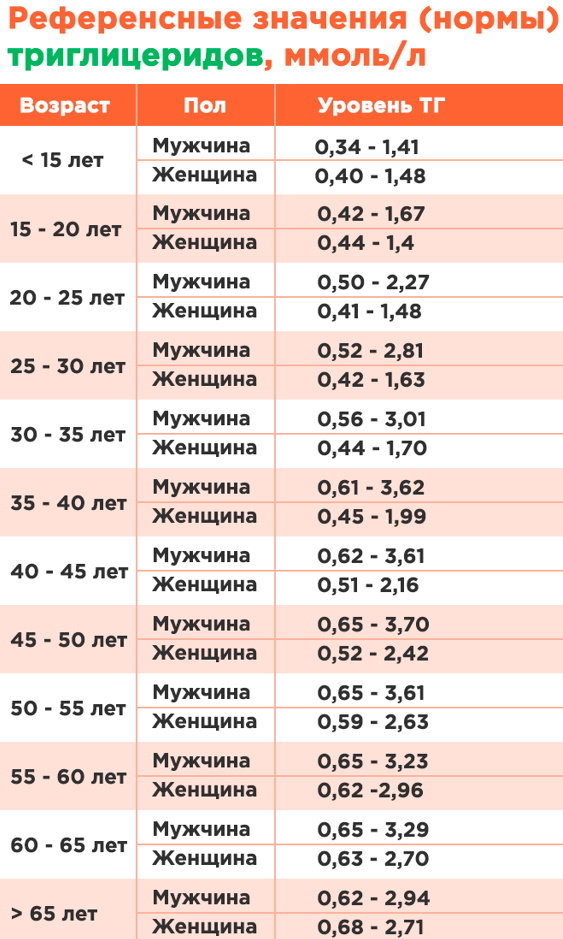
Only a specially trained and qualified specialist should deal with this decoding.
What affects the reliability of the study
In some cases, the diagnostics may give incorrect or completely incorrect results.
This may be due to the following factors:
- eating food before the study;
- taking various medications;
- infectious damage to the body (the analysis is recommended to take place no earlier than 1.5 months after recovery);
- recent surgical interventions;
- pregnancy;
- taking drugs or abruptly rejecting them;
- kidney and liver diseases;
- diabetes.
Preparation for the procedure and preliminary consultation with a doctor will avoid incorrect display results, therefore, it is recommended that you familiarize yourself with its rules in advance or consult with a specialist.
Reasons for an increase in blood triglyceride levels, what to do
In women, an increase in the level of triglycerides in the blood can occur for many different reasons, which may be associated with age characteristics or internal factors. In this case, the norms of values for each case may be different, which may be due to special conditions (pregnancy, the presence of congenital or chronic diseases, menopause, breast feeding).
After detecting a violation, the patient is sent to other studies that will clarify the diagnosis. Based on the established pathology, therapy is selected.
The treatment regimen, selection of drugs and dietary nutrition should be prescribed only by the attending physician, since self-administration of therapy can lead to a worsening of the condition.
Eating disorders
The formation of an excess amount of TG can be triggered by improper diet - the consumption of large amounts of fatty, fried foods and flour products.
Since women are more prone to accumulation of body fat, all incoming triglycerides do not have time to be converted and accumulate. Moreover, most of them enter the bloodstream and can lead to the development of various disorders, especially from the cardiovascular system.
If eating behavior is disturbed, it is necessary to adjust the diet. First of all, you should abandon the use of fatty, starchy and fried foods. Steaming is recommended. Meat dishes are best consumed boiled. Also, it is necessary to exclude sweets and dishes with a high carbohydrate content from the diet. It is recommended to consume a lot of fresh herbs and fruits, natural juices, compotes.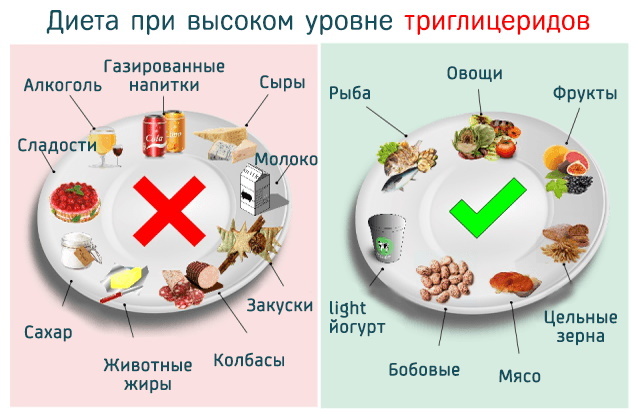
Since the body of each woman is individual, you should consult a nutritionist who will help you choose a special menu and prescribe the necessary dietary regimen, taking into account physiology patients.
Cardiovascular pathology
Disturbances in the work of the heart are directly related to the increase and deposition of lipid fats. First of all, problems arise with the vascular system, since hydrolysis of TG occurs in the bloodstream.
Excess fats adhere to the walls of blood vessels and thus form atherosclerotic deposits. At the same time, there is a violation of blood flow, which leads to an increase in the risks of coronary diseases, ischemic disorders, and heart attack.
In addition to maintaining and adhering to dietary nutrition, which is the main method of treating pathology, various medications are also prescribed. In this case, the funds are selected individually, based on the identified violation.
Possible groups of drugs:
- statins;
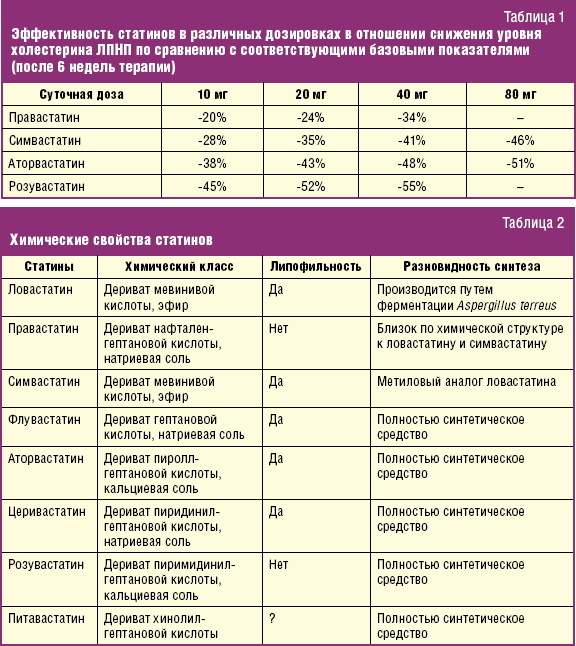
- angioprotectors;
- anticoagulants;
- beta blockers;
- antiplatelet agents;
- nitrates;
- ACE inhibitors;
- NSAIDs (non-steroidal anti-inflammatory drugs).
In more severe and complex cases, surgery is performed to remove atherosclerotic plaques.
Pathology of the hepatobiliary tract
Triglycerides in the blood (the norm in women by age for all categories should remain within 1.7 mmol / l) can also increase against the background of damage to the liver and its tissues. The conversion and synthesis of lipid fats occurs in the liver, after which the substances enter the bloodstream and back. As a result, various pathological processes develop.
Possible violations:
- various forms of hepatitis;
- the formation of scar tissue (fibrosis);
- fatty liver disease (steatosis);
- cirrhosis.
With the development of these diseases, inflammation and structural changes in tissues occur, which, in turn, only aggravates the condition and leads to excessive production of TG.
For any liver damage, dietary nutrition is mandatory. Also, drug therapy is carried out. In this case, drugs are selected based on the violation.
Medicines used:
- hepatoprotectors;

Hepatoprotectors - Medicines for the liver - antiviral agents (for viral forms of hepatitis);
- antibacterial agents.
In the event of severe disorders (cirrhosis), it is possible to perform surgical operations, including organ transplantation.
Bowel pathology
The increase in lipoprotein levels is due to their absorption directly through the intestines. In inflammatory processes, absorption and excretion of TG is impaired, which causes excessive deposition of substances. Excess lipid fats enter the bloodstream and provoke various pathologies. With the development of disorders in the intestine, dietary nutrition is supplemented with drug therapy. Medicines are selected individually according to the identified pathology.
Possible groups of funds:
- glucocorticosteroids;
- immunomodulators;
- antimetabolic drugs;
- anticancer medicines;
- TNF inhibitors;
- immunosuppressants;
- antibiotics.
In case of dysbacterial lesions or other minor bowel disorders, probiotics are added to the basic funds.
Inflammation of the pancreas
Triglycerides in the blood (the norm in women by age is unchanged and established by the Ministry of Health according to global medical practice) can increase against the background of various inflammations occurring in the pancreatic glands.
Inflammatory diseases affecting the organ lead to a violation of the secretion and formation of digestive enzymes. This, in turn, is a provoking factor in the development of diabetes mellitus.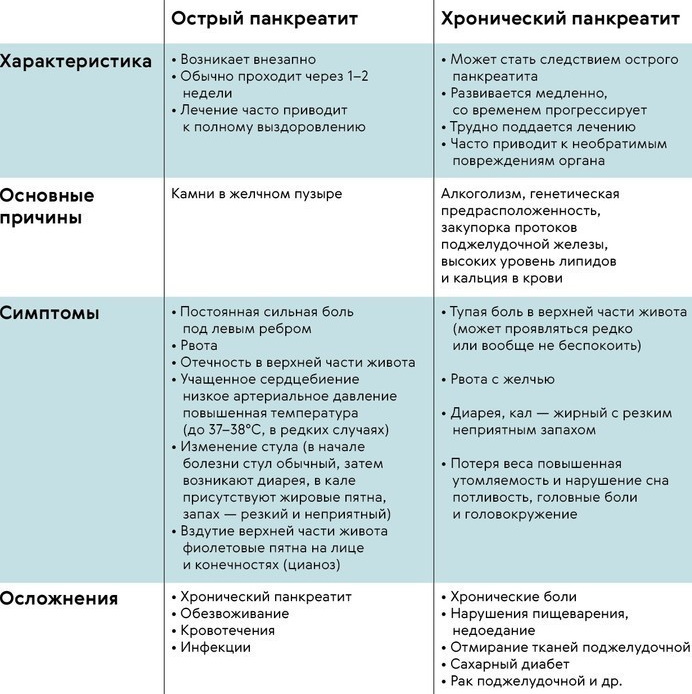
Various disorders associated with the onset of pancreatitis also lead to a deterioration in the absorption of TG into the intestine.
With an acute course of pathology, the level of lipid fats increases rapidly.
Treatment is prescribed according to the identified violation. The scheme of compulsory therapy includes adherence to dietary nutrition and taking various medications. Thus, with pancreatitis, enzyme agents are prescribed.
When diabetes occurs, insulin preparations, insulin pumps, hyperglycemic and hyperkalemic agents are used.
Reasons for lowered rates
There are many different reasons that provoke the development of pathology. As a rule, the condition occurs against the background of other internal disorders and diseases.
Causes:
- hyperfunction or, conversely, decreased activity of the thyroid gland (hyper- or hypothyroidism);
- congenital or acquired liver disease;
- chronic pulmonary pathologies;
- diseases of the gastrointestinal tract;
- disorders causing changes in the absorption of various nutrients (malabsorption syndrome);
- severe burns or injuries;
- taking medications - statins, fenofibrates, ascorbic acid, clofibrates;
- decreased appetite caused by various factors (including neuroses).
With a low TG content, it is recommended to eat high-calorie foods. In this case, the diet can include products of both animal and plant origin.
In addition to adherence to dietary regimens, drug therapy is carried out. In most cases, digestive enzymes are prescribed - pancreatin, Mezim, Creon.
As a supplement, various dietary supplements (biologically active additives) and multivitamin complexes are used, rich in macro- and microelements and fat-soluble vitamins.
In some cases, a decrease in lipoprotein levels can be observed with existing internal (concomitant) diseases. In this case, drugs corresponding to the identified disease are prescribed.
To monitor the level of triglycerides in the blood, it is necessary to undergo a preventive examination systematically (once a year). For women, especially during pregnancy or after the age of 55, this test is recommended on the advice of a doctor. In case of any deviations from the norm, you must immediately contact a specialist for advice and additional research.
Triglyceride Videos
The norm of triglycerides in the blood in women and men:



